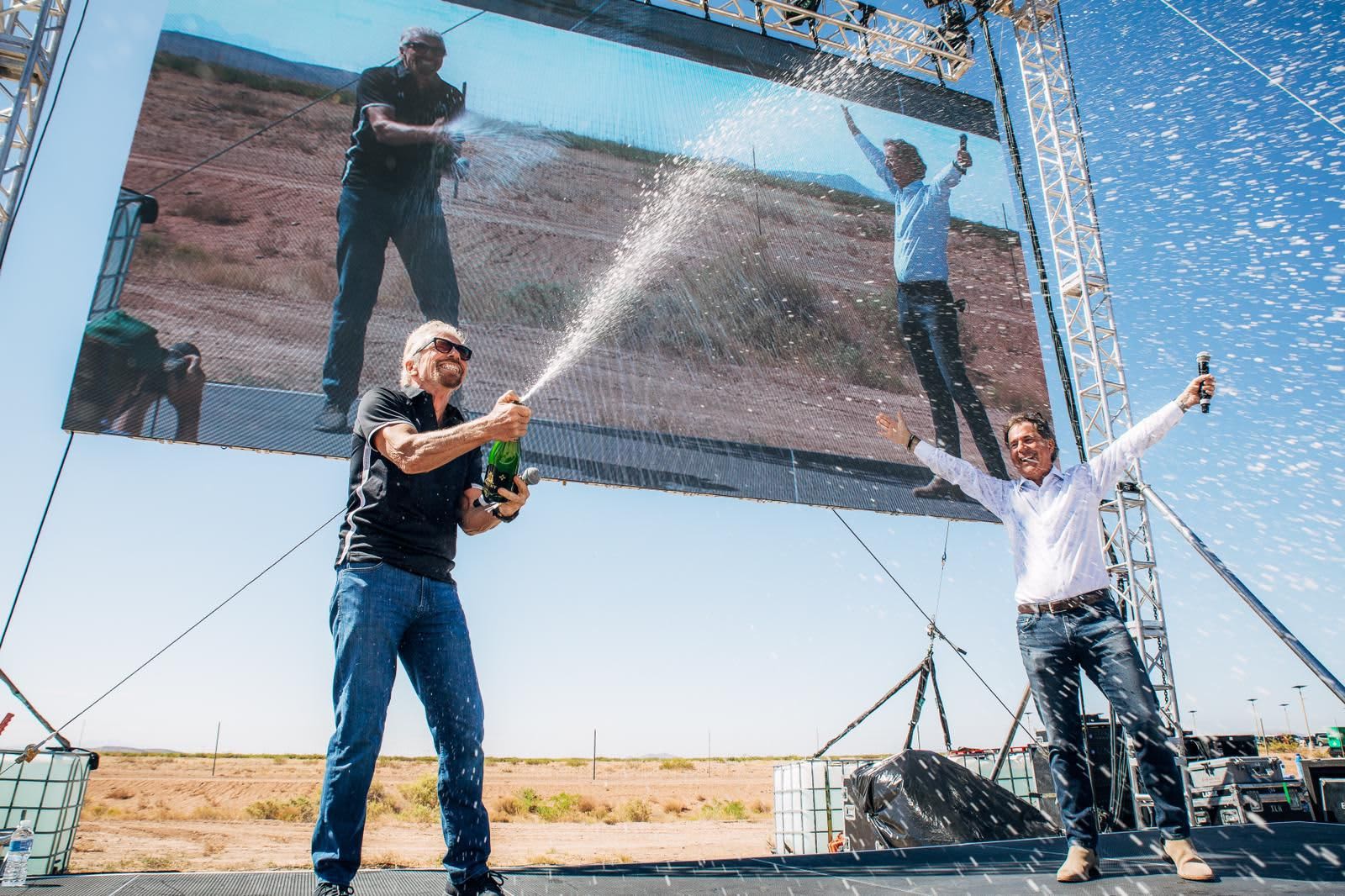This post was originally published on this site

Jeff Bezos plans to launch himself to the edge of space on July 20, but fellow billionaire Sir Richard Branson might still try to fly with Virgin Galactic first.
Virgin Galactic leadership previously stated the company would conduct three more spaceflights to complete development testing of spacecraft VSS Unity. The company is working to begin flying paying passengers in early 2022, having completed a successful mission last month with just two pilots
Under that plan, the first of those next three flights would carry four passengers to test the spacecraft’s cabin, the second would be with Branson, and the third would fly members of the Italian Air Force for professional astronaut training.
But a report earlier this month by a blogger based in Mojave, California – where Virgin Galactic manufactures its vehicles – said the company is considering reorganizing its flight schedule to launch Branson next, instead of second. The report came shortly after Bezos announced he would fly on Blue Origin’s first passenger spaceflight, planned to launch on July 20 – suggesting Branson may yet try to beat Bezos by personally flying to space over the July 4 weekend.
Virgin Galactic has not confirmed or denied it is considering a reorganization of its spaceflight schedule, which CEO Michael Colglazier emphasized in an interview with CNBC.
“I know there’s a lot of interest and speculation out there but we have not announced either the date nor the people that would be on those,” Colglazier said. “We have three more flights in our test flight program and we’re on that path and we’re going to continue on that path.”
Branson’s Virgin Galactic, founded in 2004, and Bezos’ Blue Origin, founded in 2000, are competing to take passengers on short flights to the edge of space, a sector known as suborbital tourism. The companies’ spacecraft reach an altitude of about 80 kilometers to 100 kilometers (or about 260,000 to 330,000 feet), spending a few minutes floating in microgravity.
Shares of Virgin Galactic jumped more than 30% in trading on Friday, after announcing the FAA granted the company the license it needs to fly passengers on future spaceflights.
“The flight test program shifts now from … some of the technical aspects – that we were continuing to prove out for ourselves and for the FAA – and we’re now shifting to the cabin experience,” Colglazier. “The first of these [next three spaceflights] we said would have four mission specialists, the second as well, and then one followed by the Italian astronauts.”
Turnaround time
Colglazier emphasized that “the May 22 flight was very successful for us” and, with the FAA’s approval now in hand, Virgin Galactic is turning its “attention to clarifying when we’ll be ready for our next spaceflight.”
While Virgin Galactic hopes to eventually have multiple spacecraft flying each week, currently the company’s VSS Unity spacecraft is the only one operational in its fleet – making turnaround time a key factor if Branson wants to launch before July 20.
More than two years ago, when Virgin Galactic flew its first and second spaceflights, it took the company 71 days to turn around the spacecraft between the launches.
Getting the next spaceflight launched by the July 4 weekend requires preparing the spacecraft in just 43 days. But a turnaround time of 71 days would mean Virgin Galactic’s next spaceflight launches on Aug. 1, a couple weeks after Bezos plans to fly.
However, Virgin Galactic has launched rocket-powered test flights more rapidly before. As the company was ramping up testing in 2018, it launched VSS Unity on three increasingly high altitude rocket-powered flights as it got closer to reaching space. Those three rocket-powered flights – launched on April 5, May 29, and July 26 in 2018 – saw the company turn around VSS Unity in 54 days and 58 days, respectively.
Launching before July 20 would require Virgin Galactic prepare VSS Unity in 58 days or less – in essence, as quickly as it ever has before.
For now, Colglazier said Virgin Galactic is “just not at a point” to talk about timing of the next spaceflight.
“We approach this very methodically, with safety as the first consideration, and when we have all those boxes checked and all the steps in place – that’s when we can move forward and announce,” Colglazier said.
Become a smarter investor with CNBC Pro.
Get stock picks, analyst calls, exclusive interviews and access to CNBC TV.
Sign up to start a free trial today.



